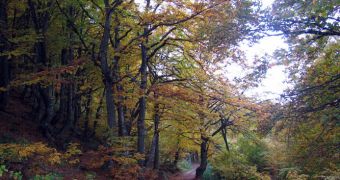The United States Geological Survey (USGS) has just released a new report on the state of forests in the country, and the picture the document paints is not at all flattering for southwestern forests, experts say. At the current rate, they are faced with a bleak future.
Experts being the investigation have determined that the habitats these forests underlie and occupy are also at risk of experiencing negative set-backs, due to the effects that declining tree surfaces will have on the established food chains.
Some of the dangers that southwestern forests will be subjected to include a decelerated pace of tree growth, more severe and often wildfires, increased numbers of bark beetle outbreaks, larger tree death rates, as well as changes in the area's dominance patterns.
For millions of years, various species rule supreme at certain locations, but that may soon change due to the fact that shifting temperatures are allowing invading species to move further north or south than their usual ranges.
The main culprits for this chain of events are rising temperature and aridity levels, which change the way trees have been growing and developing since the dawn of time.
The USGS report explains that, if the trend is not curbed soon, than all the risks factors the forests are subjected to will start acting on local ecosystems, with important negative side-effects.
Details of the research were published in the latest issue of the esteemed journal Proceedings of the National Academy of Sciences (PNAS). The report was compiled by the USGS and other agencies.
“Forests in the southwestern United States may experience all of these changes because they appear particularly sensitive to warming temperatures and increased dryness,” says Craig D. Allen.
“The presence of forest vegetation in semi-arid regions, like the US southwest, starts with the availability of adequate moisture, which depends on both precipitation and temperature,” adds the expert, who is a research ecologist at the USGS, and also a co-author of the report.
“Such big, fast changes in Southwest forest vegetation could have significant effects on a wide range of ecosystem goods and services, from watershed protection and timber supplies to biodiversity and recreation,” he goes on to say.
“These emerging vulnerabilities present increasingly clear challenges for managers of southwestern forests to develop strategies to mitigate or adapt to the coming changes, in order to sustain these forested ecosystems and their benefits into the future,” the investigator concludes.
The USGS report shows that both the socioeconomic and environmental sustainability of the entire southwestern region could be affected by the ensuing changes.

 14 DAY TRIAL //
14 DAY TRIAL //